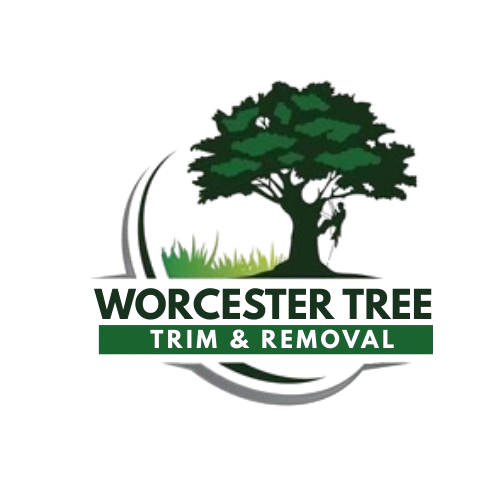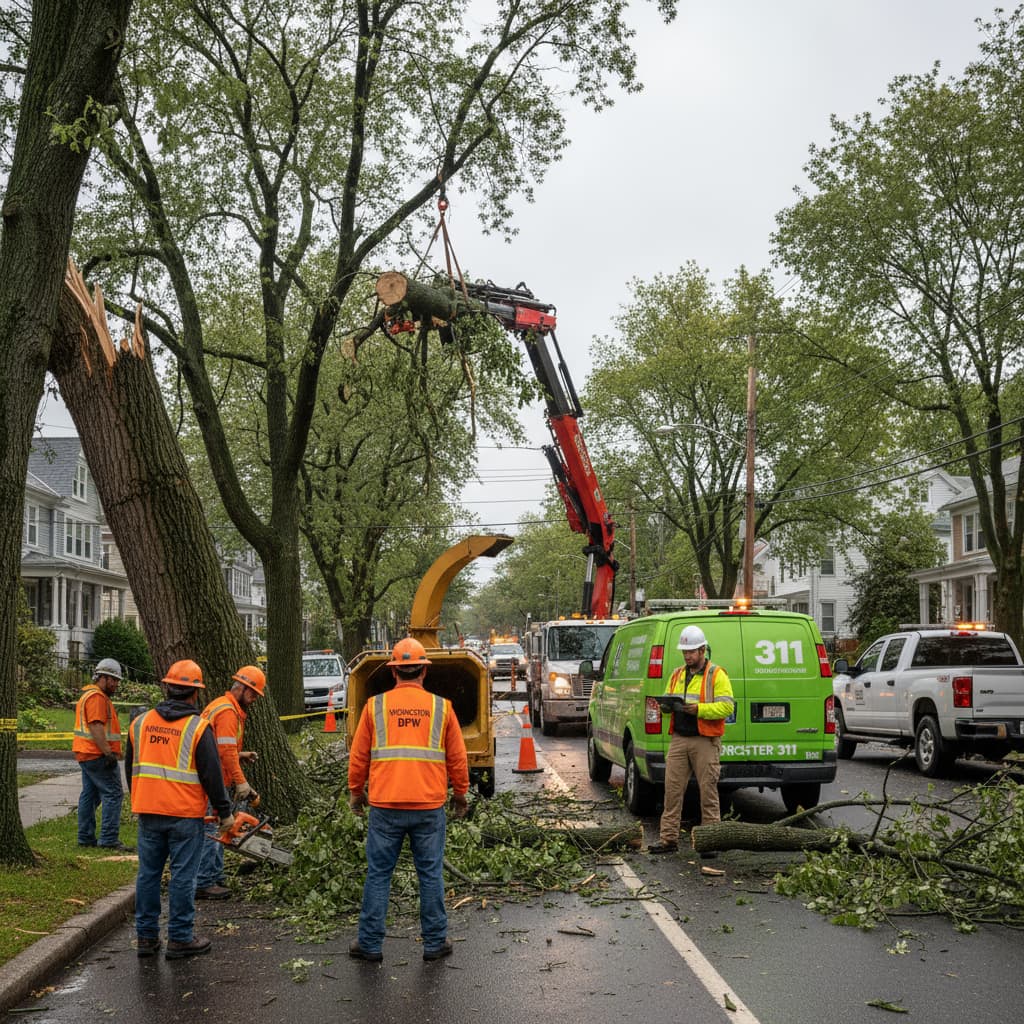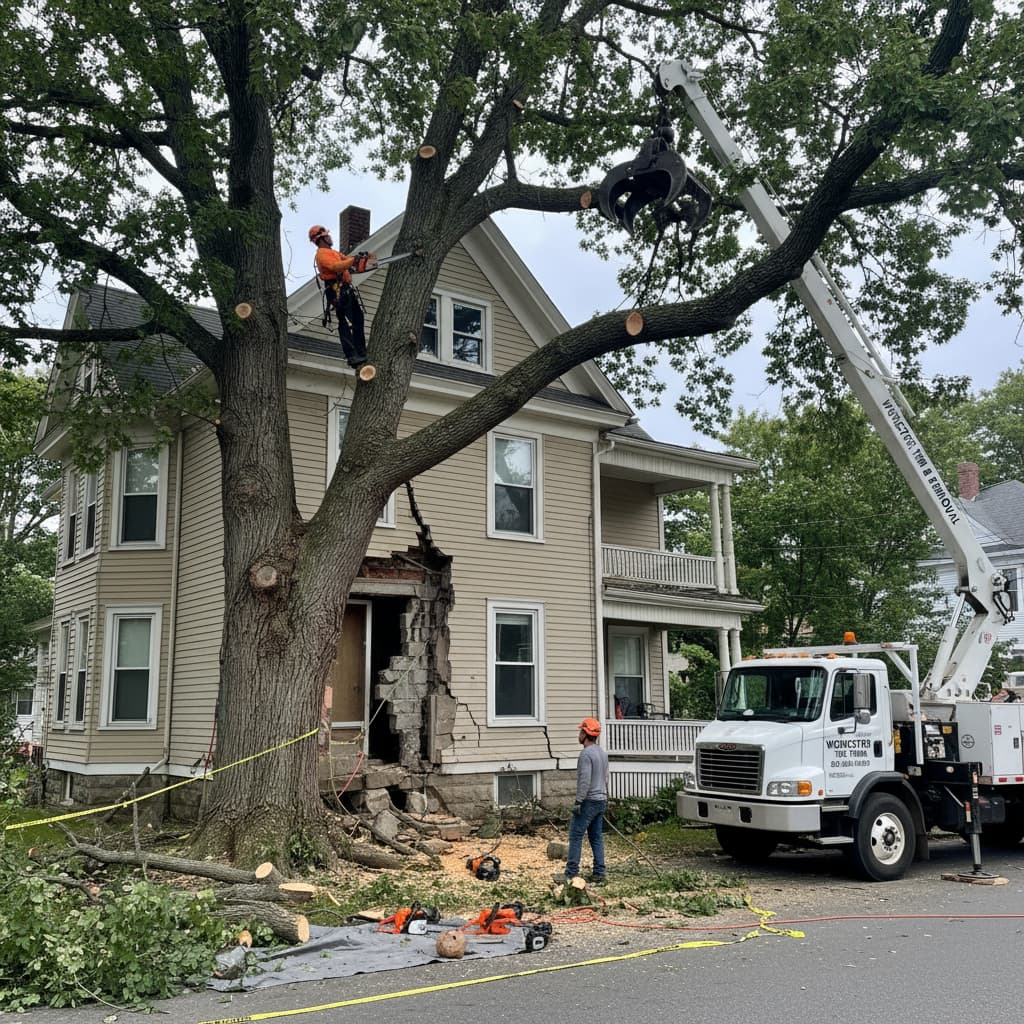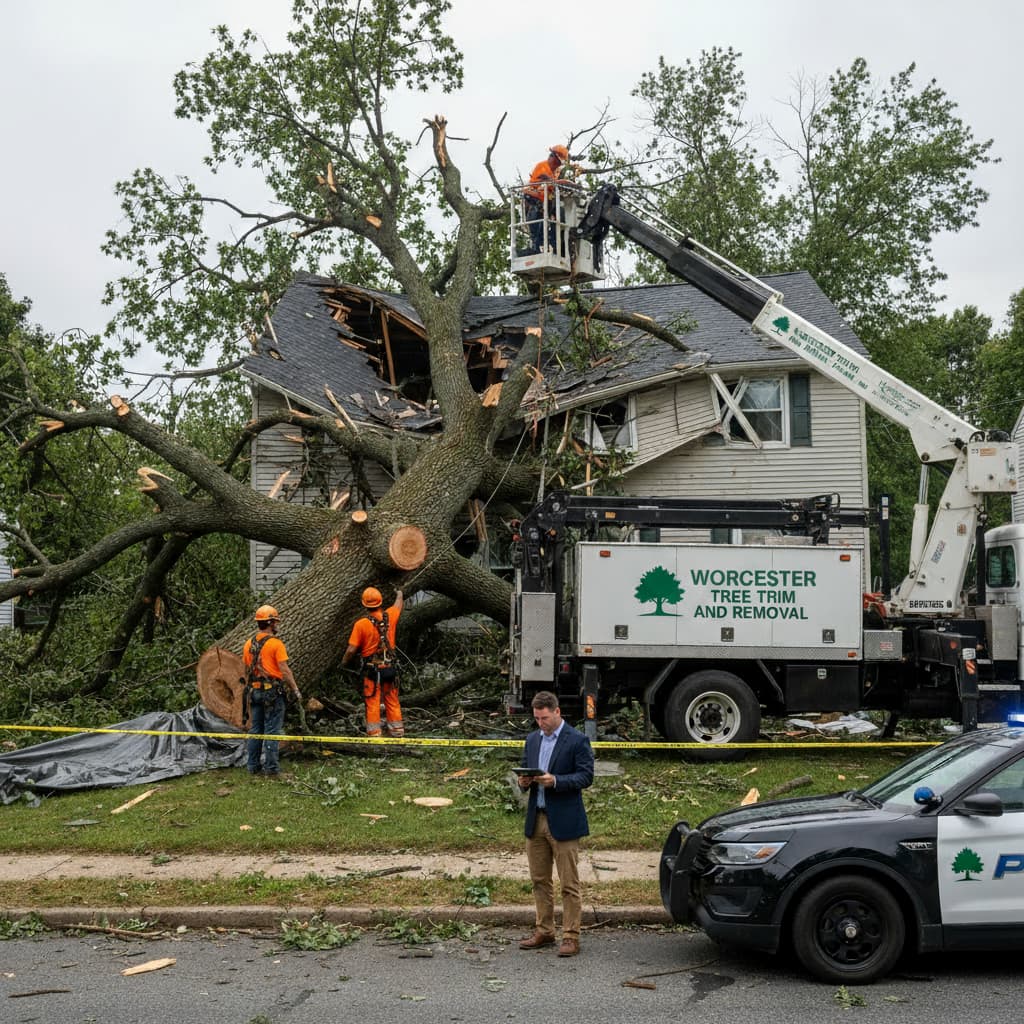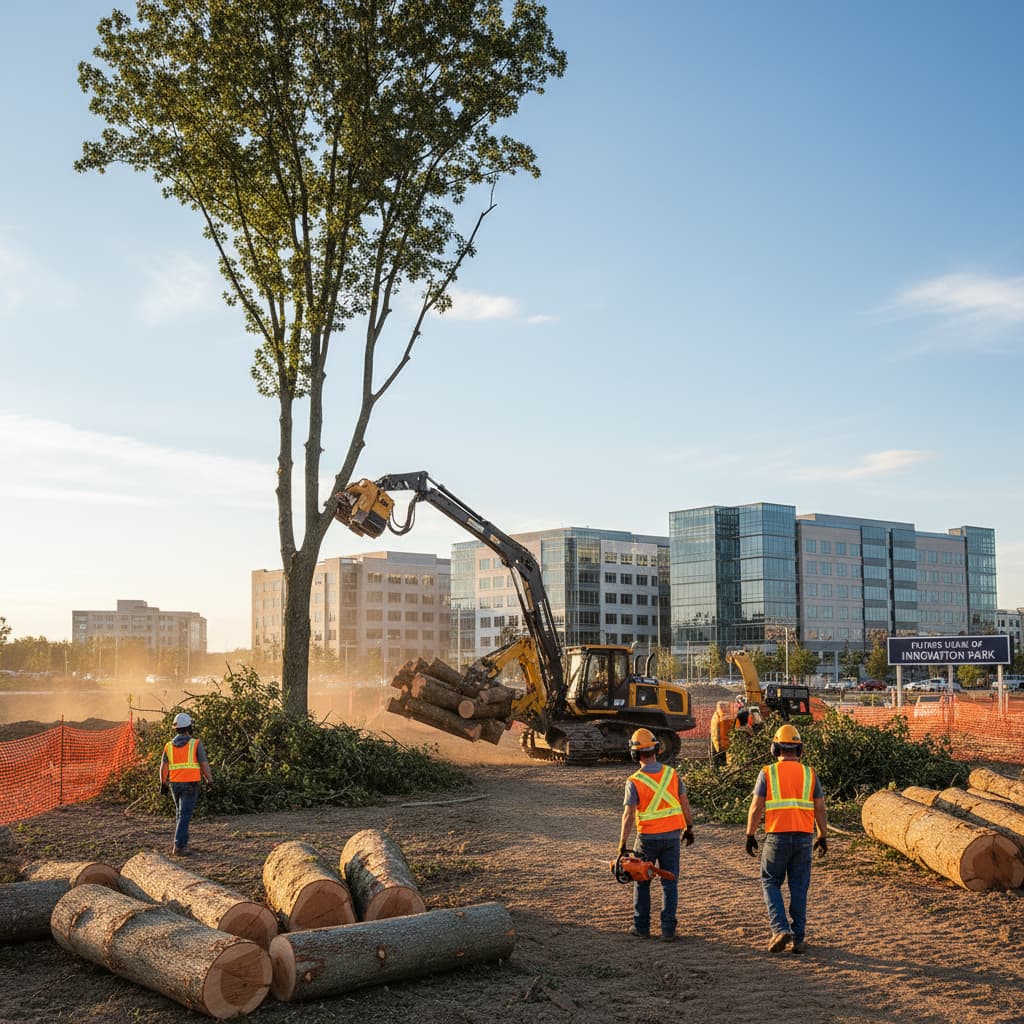
Proper Tree Planting Technique to Reduce Disease Risk in MA
Tree Planting Worcester
Massachusetts homeowners investing in tree planting projects face unique challenges that can determine whether their new trees thrive for decades or succumb to preventable diseases within a few years. From the steep slopes surrounding Worcester’s College of the Holy Cross to the clay soils common throughout neighborhoods like Crown Hill-Piedmont and the Eastside, proper planting technique serves as the foundation for long-term tree health and disease resistance.
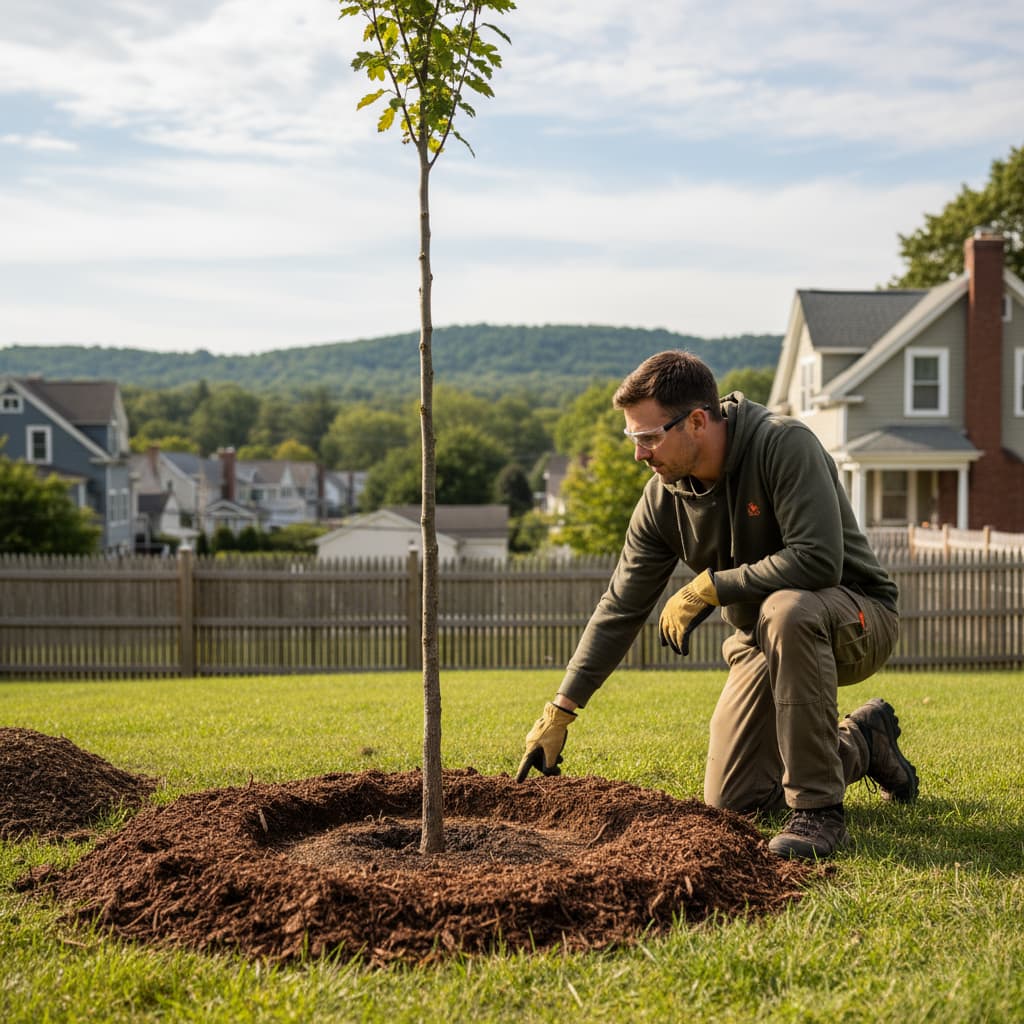
The Critical Role of Root Flare Exposure
The most fundamental aspect of disease-preventing tree planting involves proper root flare positioning. The root flare, where the trunk widens into the root system, must remain visible above the soil line to prevent a cascade of health problems that plague improperly planted trees throughout Central Massachusetts.
Understanding Root Flare Function
Tree roots require oxygen exchange to function properly, with most feeder roots concentrated in the top 12 inches of soil just below the root flare. When this critical junction gets buried beneath soil or mulch, it creates anaerobic conditions that promote fungal diseases and bacterial infections. The phloem tissue in this area, responsible for distributing energy produced by leaves throughout the tree, begins to rot when consistently exposed to moisture from buried conditions.
For Worcester properties with mature landscapes, proper root flare exposure becomes especially important. Trees planted near historic properties around downtown Worcester or in established neighborhoods must compete with existing root systems while establishing their own healthy growth patterns. Buried root flares make this competition impossible to win.
Locating the Root Flare Before Planting
Container-grown and balled-and-burlapped trees often arrive with root flares buried several inches beneath nursery soil. Before digging any planting hole, carefully remove soil from around the trunk until you locate where the trunk begins to widen. This process may require removing 4-6 inches of excess soil, revealing the true planting depth necessary for healthy establishment.
Professional tree services like Worcester Tree Trim and Removal routinely discover root flares buried 8 inches or more below the soil surface in nursery stock. Taking time to locate this critical junction prevents decades of future problems and ensures proper planting hole depth from the beginning.
Proper Planting Hole Specifications
Massachusetts clay soils, common throughout Worcester area properties, require specific hole dimensions and preparation techniques to promote healthy root development while preventing disease-promoting conditions.
Depth and Width Guidelines
Dig planting holes no deeper than the height of the root ball, measured from the located root flare to the bottom of the root system. The hole width should extend approximately three times the diameter of the root ball, providing adequate space for root expansion while ensuring proper soil contact.
Plant the tree so the root flare sits 2-4 inches above the surrounding grade. This elevation accounts for natural settling while ensuring the critical junction remains above ground level permanently. In Worcester’s heavy clay soils, found throughout areas like Green Hill Park and surrounding residential neighborhoods, this elevation becomes even more important for drainage and oxygen access.
Soil Preparation and Backfill
Recent research has changed traditional approaches to backfill soil composition. Current best practices recommend using the existing native soil rather than amended mixtures that can create drainage problems and root circling. Worcester’s clay soils, while challenging for some aspects of gardening, actually provide good structural support for trees when properly managed.
Ensure the bottom of the planting hole consists of undisturbed or recompacted native soil to prevent settling that could bury the root flare over time. Loose soil at the hole bottom allows the tree to sink as it settles, negating careful attention to initial planting depth.
Species Selection for Disease Resistance
Central Massachusetts climate and common disease pressures make species selection a crucial component of disease prevention. Understanding which trees naturally resist local disease problems helps ensure long-term landscape success.
Disease-Resistant Species for Worcester Conditions
Oak varieties that resist oak wilt disease should be prioritized over susceptible species, especially given the mature oak populations throughout Worcester’s neighborhoods and parks. Red oaks, while beautiful, face greater disease pressure than white oaks in Massachusetts conditions.
Maple selections should focus on varieties with resistance to common issues like anthracnose and leaf spot diseases. Sugar maples generally perform better than Norway maples in local conditions, while also supporting native wildlife populations that depend on indigenous tree species.
Avoiding Disease-Prone Combinations
Certain tree species create disease pressure for nearby plantings. Apple and crabapple trees should be planted at least 500 feet from eastern red cedars to prevent cedar apple rust disease cycling. Similarly, dogwoods perform better when not planted near oak trees that may harbor cross-infecting pathogens.
For properties near the Blackstone River Bikeway or other areas with high moisture levels, avoid species prone to root rot diseases in favor of trees adapted to occasionally wet conditions.
Mulching Techniques That Prevent Disease
Proper mulching supports tree health while preventing the moisture-related problems that promote fungal diseases common in Massachusetts landscapes.
Correct Mulch Application
Apply organic mulch in a donut shape around the tree, extending to approximately three times the root ball diameter while maintaining a 3-12 inch mulch-free zone around the root flare itself. Keep mulch depth to 2-4 inches maximum, tapering to 1-2 inches near the tree base.
Never create volcano mulching, where mulch piles high against the trunk. This practice traps moisture against bark tissue, creating ideal conditions for fungal infections and insect problems. It also encourages adventitious root development that can lead to girdling root problems years later.
Mulch Material Selection
Organic mulches like shredded hardwood or wood chips provide excellent benefits for tree establishment without promoting disease problems. These materials break down slowly, improving soil structure while providing consistent moisture retention without waterlogging.
Pine bark mulch and hardwood chips both work well in Worcester conditions, though avoid fresh wood chips immediately around newly planted trees as they can temporarily tie up nitrogen during initial decomposition phases.
Watering and Establishment Care
Proper watering techniques during the establishment period significantly impact disease susceptibility and long-term tree health in Massachusetts conditions.
Establishment Period Watering
Deep, infrequent watering encourages proper root development while avoiding the consistently moist conditions that promote fungal diseases. Water should penetrate to the entire root zone depth rather than providing frequent shallow applications that encourage surface rooting.
Monitor soil moisture at root ball depth rather than relying on surface conditions, as clay soils can appear dry on top while retaining moisture at the root level. This becomes especially important during Worcester’s variable spring weather when moisture levels can change rapidly.
Seasonal Considerations
Massachusetts planting seasons offer distinct advantages for disease prevention when properly timed. Spring planting allows full growing season establishment before winter stress, while fall planting takes advantage of cooler temperatures and typically adequate moisture without summer disease pressure.
Avoid planting during the hot, humid periods of mid-summer when disease pressure peaks and establishment stress remains highest. These conditions make young trees particularly vulnerable to various fungal infections common in New England climates.
Professional Installation Benefits
While homeowners can successfully plant trees using proper techniques, professional installation provides advantages that significantly impact long-term disease resistance and overall success rates.
Expert Assessment and Technique
Certified arborists understand species-specific requirements and can assess site conditions for potential disease problems before planting begins. They recognize soil drainage issues, existing disease pressure, and spacing considerations that affect long-term tree health.
Professional installation ensures proper root flare exposure, appropriate planting depth, and correct mulching techniques from the beginning. These fundamentals prove far easier to establish correctly during initial planting than to correct years later when problems become apparent.
Worcester Tree Trim and Removal combines local expertise with industry best practices, understanding how Central Massachusetts conditions affect different tree species and what techniques provide the best long-term results for area property owners.
Long-term Monitoring and Care
Successful tree planting extends beyond installation day, requiring ongoing attention to maintain disease resistance and address problems before they become serious threats to tree health.
Early Detection Practices
Regular inspection during the first few years allows early identification of potential problems like girdling roots, disease symptoms, or establishment issues. Look for changes in leaf color, size, or timing that may indicate stress or disease development.
Monitor the root flare area to ensure it remains visible and free from soil or mulch accumulation. Many tree problems develop gradually over the years, making early detection and intervention crucial for long-term success.
Professional tree services can provide ongoing assessment and preventive care programs that maintain tree health while addressing potential problems before they require expensive corrective measures or tree removal.
